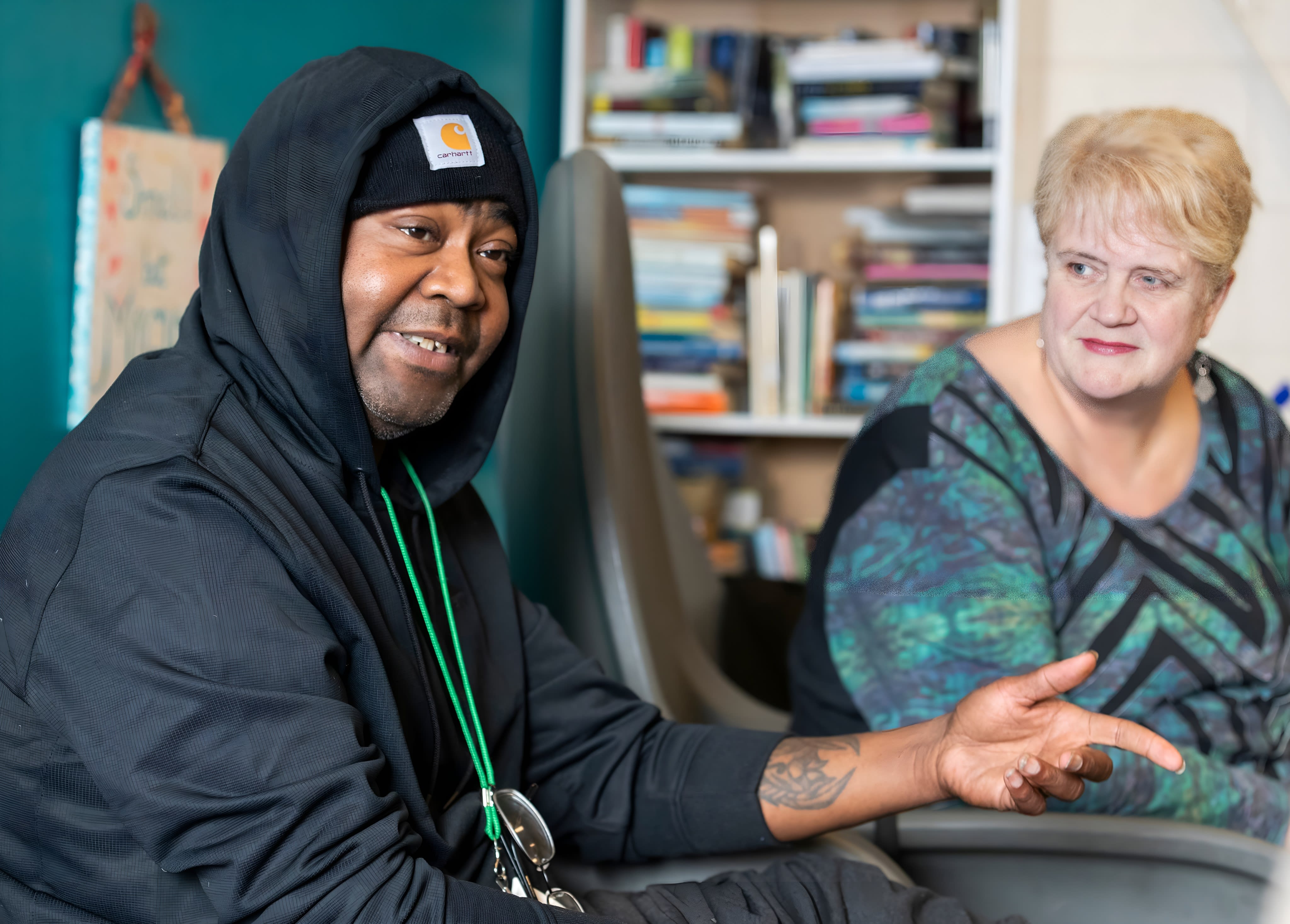Home for Good aims to help 150 of Anchorage’s most vulnerable
A little more than a year ago, Shane Capurro was panhandling at his usual spot along Northern Lights Boulevard with three other men who through circumstance had become his friends. He spent the day holding a sign, picking up spare change, doing what he could to get by.
That night he crawled into his tent nearby to sleep. Sometime in the early morning, he woke up, confused and feeling sick. He was drenched in blood.
“They said I took a lock and chain to the head,” Capurro said. “I was just attacked, and I don’t remember any of it.”
The next few days would be a blur for Capurro, who spent three days in the hospital recovering from a fractured skull, then was released back onto the streets. Looking back on that time, Capurro says that if it hadn’t been for a program called Home for Good he doesn’t think he would have survived.
“Zach from Behavioral Health came and said, ‘Do you want to get out of here? I can help you.’ And he did. He did everything he said he’d do; it never stopped,” he said.
Home For Good is a three-year program seeking to help 150 of Anchorage’s most vulnerable -- people experiencing homelessness -- by connecting them with housing and support services. The program, administered by United Way in cooperation with Alaska Behavioral Health, Southcentral Foundation, CHOICES, Inc., and RurAL CAP, provides individuals with a safe refuge to overcome the obstacles limiting their ability to find success on their own. Providence has committed $500,000 of community benefit funds over three years to support the program. Not only is Home for Good's a lifeline for these individuals, it also makes financial sense.
“We’re really interested in working upstream,” said United Way president and CEO Clark Halvorson. “We are identifying some of the neighbors who need the most help and providing wraparound services that include housing and behavioral health services. It isn’t going to come overnight, but it’s working.”
About 350 Anchorage residents experiencing persistent homelessness or challenging living conditions also have other needs that make them a good fit for the program, Halvorson said. In the past, these residents have rotated through expensive emergency response systems such as jail, hospitals, and shelter. By breaking the cycle, those costs are reduced.
Right now, Halvorson said, Home for Good helped 65 individuals with services, 46 of whom also found homes. A six-month study of Home for Good's impact showed a 69% reduction in arrests, a 50% reduction in calls for emergency medical transport, a 78% reduction in shelter stays and a 75 percent reduction in safety center intakes.
That, Clark says, is progress.
“It shows the program is working, and the best part is the reduction in emergency service use helps both the participants and the community,” adds Samantha Longacre, Home for Good’s project director.
The “Zach” to whom Capurro referred to earlier is Zach Zears, who worked for what is now Alaska Behavioral Health a year ago and has experience in community outreach. Zears says he remembers his encounter with Shane vividly.
“Shane was someone I met quite a few years ago,” he said. “With the Home for Good program, we are given a list of people who would qualify, and when I saw Shane’s name pop up, I said, ‘I can find Shane within 24 hours,’ because I knew where he hung out.”
So that’s what he did.
“When I found Shane, he was sleeping rough and said he wasn’t feeling so great,” Zears said. “He had just gotten out of the hospital.
“It was due to the relationship that I had cultivated with him over the years that we were able to get him to trust us and find him a place to live, and to heal.”
Today, Capurro’s life is looking up. He lives in a small downstairs apartment in a neighborhood of modest homes, and he has a full kitchen to cook in – one of his talents that he enjoys. Being away from the constant drugs and alcohol has allowed him to focus on his recovery – physically, mentally and emotionally. Through his treatment team at Alaska Behavorial Health, he receives regular visits from a case manager, attends therapy with a clinician, takes a stress management class, and attends a substance abuse management class once a week.
Sitting in a recliner chair with a TV table beside him, Capurro, 61, tries not to get emotional. A lot has changed in his life, though, and he acknowledges that it can be overwhelming.
“Nobody has reached out to me since my family, and they are all dead,” he said. “I don’t get that much attention paid to me; it means a lot to me.”


